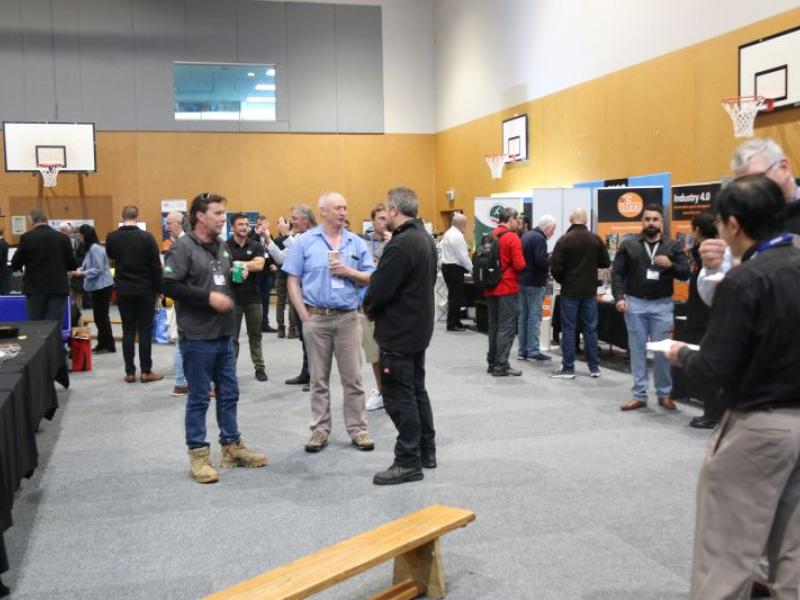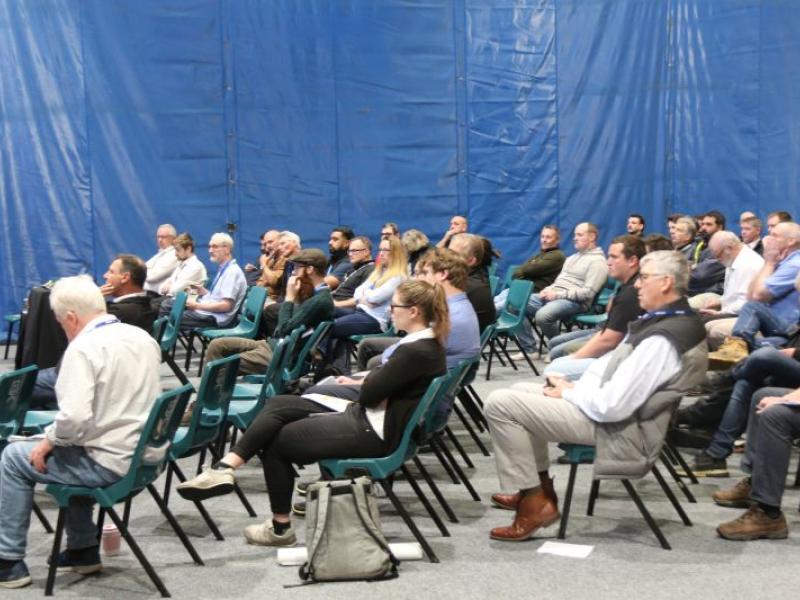“Maintenance is all about maximising plant reliability,” says Larry Wiechern. The Maintenance and Reliability Centre Manager at Manukau Institute of Technology highlights the importance of upskilling the workforce, sharing expertise and choosing trustworthy suppliers.
DEMM: What is your definition of maintenance?
LW: Maintenance encompasses every kind of activity to ensure the plant operates as reliably and efficiently as possible.
DEMM: How do you increase the efficiency of a plant?
LW: Personally, I think a lot of problems could be eliminated at the stage when the plant is being designed. Often this is a result of the theory not backed up by having a solid practical understanding of the plant and equipment being designed and also too much focus on the equipment purchase “cost”, not the “total cost of ownership” over the entire life of the equipment and plant. If the design has flaws you are always going to be chasing your tail to maintain the equipment and achieve the overall operating efficiency that management expects.
Once the plant is being installed, there are hopefully foundations that adequately support the equipment to maintain its alignment under load without being affected by outside vibrating influences. There are statistics that indicate misalignment causes the majority of damaging vibrations in reciprocating and rotating machinery. Therefore: Have it done properly the first time, and have periodic alignment checks performed during planned maintenance programmes to compensate machine movement, foundation settlement and local modifications in your production.
The other critical criteria is precision balance of all the rotating components, this together with precision alignment and installation methods will eliminate as much as 80 percent of possible machine failures.
Another crucial discipline that has often been neglected and not given the importance that it deserves is a better understanding of lubrication from the point of purchase to its correct application; after all it is the lifeblood of machine and equipment and plays a vital role in the overall life and efficiency of your plant.
DEMM: Once the plant is set up and running, what else can be done?
LW: It should go without saying that you need to adhere to good and ongoing maintenance practises. Plant operators play a decisive role as they are the eyes and ears of the plant. If trained properly they are able to recognise the first sign of anything going wrong, be it an unusual noise or smell, excessive vibration, oil or air leaks. A well-trained operator will save your company a fortune if notice is taken of their observations. I have to say I have been very impressed by the level and interest shown by the operators I have had come through the maintenance centre over these past few years. But of course the companies have only sent me those that are keen to learn and pass on that knowledge to others.
Clyde Volpe, who is with the Vibration Institute of Australia, emphasises the fact that the focus of engineering should be on plant reliability – it is not sufficient to utilise condition monitoring systems. Somebody must check and analyse the gathered information and decide which maintenance activities should be scheduled, and changes implemented to ensure maximum plant reliability and efficiency. Collecting data never fixed anything unless action is taken to effect a change for improvement.
Ron Moore, an internationally recognised authority on manufacturing excellence, once pointed out to me that the biggest problem in this context is the alignment of all the technologies available. There is infrared thermography, ultrasonics, oil and vibration analysis, and in many cases the findings of each technology are not brought together, but are analysed separately. Consequently they can’t support each other to predict impending machinery failure.
The industry needs to interconnect better, share their expertise and form networks; these networks include Vibrations Association of New Zealand (VANZ), SIRF Rt - Industrial Maintenance Roundtable (Aust/NZ) and Maintenance Engineering Society NZ (MESNZ). And engineers can also attend various seminars and conferences, to bring themselves up to date with new and current practises, and network with experts and peers.
DEMM: Like the seminars offered at the MIT’s Maintenance and Reliability Centre?
Absolutely! The one, three and five day short courses on our training programme aim to train plant staff, especially operators and fitters, to detect and repair all sorts of faults that affect the manufacturing process. What makes us really stand out are the industry experts that support our programme, because those experts have the real in depth knowledge. We are pretty lucky to have those guys on board.
There is for example Barry Robinson, the General Manager of South Auckland Forgings Engineering (SAFE), who is trying to make people aware of the dangers of poor welding practises, and the necessity for pre- or post-heating welds to relieve the internal stresses that might have developed. He also emphasizes the quality of material you purchase and that it has to be fit for the intended purpose.
We also work together with Clyde Volpe from the Vibration Institute of Australia, and Jason Tranter, from Mobius, who are in my opinion the best trainers of vibration analysis knowledge anywhere in the world. Phil Williams, the former Training Manager of SKF New Zealand, has been supporting our programme over many years. We have just developed, together with SKF, the Vibration Analysis Category 1 and 2 courses, along with a three-day bearing seminar at MIT.
Currently we are in talks with Waikato University and Dr James Neill, for an introduction to ultrasonics one-day seminar leading into onto their existing full-week certification course. We hope to set up partnerships with other companies in order to offer more in-depth training delivered by these industry experts. These include SIRF Rt – RCA Rapid one-day and 5 Whys half-day workshops, utilising their expert trainers. There is so much help available; you just need to know where to tap into it.
DEMM: Do you perceive lack of skills to be a problem for the industry in New Zealand?
LW: At the moment I am very disappointed in the way we are training our apprentices. Top-end subjects such as ultrasonics, infrared thermography, and oil and vibration analysis are not taught at all at the polytechnic institutes around the country, or only on a very limited scale. If the apprentices are to get into contact with those important topics, it has to happen at their workplaces. And other topics that the guys are being taught do not relate to their trade. We’ve got to upskill our workforce, starting with the operators and then the tradesmen and fitters, so they can pick up the necessary skills to do their jobs properly.
What’s the point in having a contractor come on site to take off the inner ring of a bearing, and instead of using the right tools they use a ‘gas axe’ and burn it off. The production is up and running fairly quickly, but at what cost? This procedure introduces stress raisers into the shaft, causing it to eventually break. If manufacturers do not lift their game, and if mistakes keep happening, they will run the risk of going out of business. That’s the danger of not doing your job properly and not understanding the repercussions of equipment failure due to poor maintenance practises.
DEMM: How big a threat are counterfeit bearings to the industry?
LW: Well… nobody knows exactly how much damage has been caused. We have a large spherical roller bearing on display here at the centre that originally looked fine. The internal clearances/tolerances were inconsistent. We then cut out a piece and put it under the microscope to check the material; its hardness, the quality of the steel, and for any inclusions. With the help of a microscope we were able to conclusively identify it as a fake. It would have failed under load pretty quickly. The brand imprint on the bearing said ‘SKF’ and ‘Made in Germany’. After a failure you would have blamed the fitter, the operator, the lubricant; and then the bearing manufacturer, possibly damaging the brand forever.
In January 2007 around 40 tons of counterfeit bearings with the brand imprints INA, FAG and SKF and a nominal value of some 8 million Euros were destroyed in Germany. What really disappoints me is the fact that when I talk to people, they have never heard of this incident. It should be made known more widely to alert people to the dangers of counterfeit bearings and the extent of the problem.
DEMM: What other counterfeit products can you find out there?
LW: Basically every product could be counterfeited; bearings, gearboxes, chain sprockets, v-belts, steel, welding products – you name it. Richard Clancy, Director of RJC Engineering Consultants, reported a case where a large Indonesian paper mill had purchased counterfeit automatic transmission oil for its fork-trucks. The oil actually was transformer oil that had been dyed red and put in an original Mobil oil drum. The trucks’ transmissions failed, paralysing the production of the mill. No matter what product, you need to buy from genuine, preferred suppliers. It’s important you know the person you’re buying the equipment from. If you focus simply on the cost, it could be that you have purchased a counterfeit product and introduced a serious problem into your production process.
I’d like to finish with this piece of advice: Take the time to audit the contractors that have secured the contract and ask the question – where have they purchased the items such as bearings, oil etc. that they are bringing onto your facility? My advice is: always buy from preferred suppliers!
DEMM: Larry, thank you for the interview.
Email: cheryl.mcleod@manukau.ac.nz






